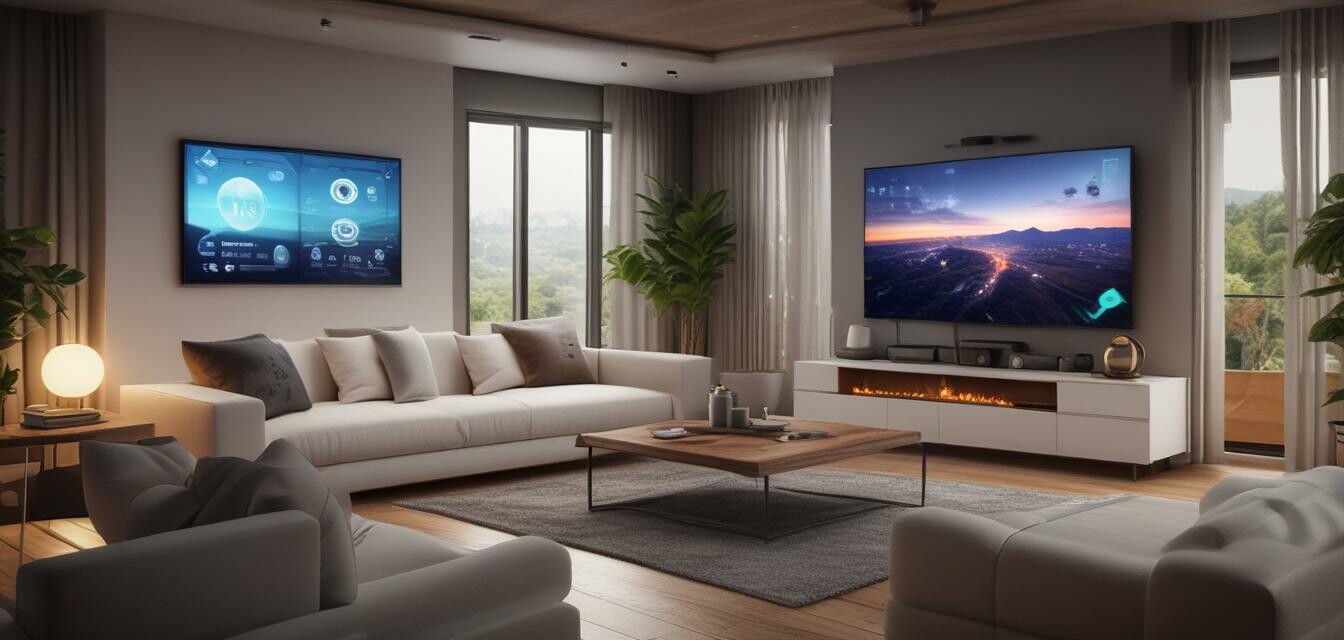
IoT and Its Impact on Smart Home Efficiency
Key Takeaways
- The Internet of Things (IoT) connects devices for seamless communication.
- IoT improves energy efficiency and reduces utility bills.
- Automation through IoT enhances security and convenience.
- Smart home devices increase property value through modern upgrades.
- Adaptable technology allows for personalized home experiences.
The Internet of Things (IoT) is revolutionizing the way we manage our homes. It connects everyday devices, allowing them to communicate and work together in ways that improve efficiency and enhance our lives. In this article, we’ll explore how IoT impacts smart home automation systems, creating a more efficient and secure living environment.
Understanding IoT: The backbone of smart homes
The term "Internet of Things" refers to the interconnected network of physical objects embedded with sensors, software, and other technologies to collect and exchange data with other devices over the internet. In the context of smart homes, IoT enables seamless communication between devices, creating a more responsive and efficient living space.
Key features of IoT in smart home technology
| Feature | Description |
|---|---|
| Remote Monitoring | Allows homeowners to monitor their homes from anywhere using smartphones or tablets. |
| Automation | Automated tasks such as adjusting lights, thermostats, and security protocols based on rules or preferences. |
| Integration | Smart devices can work together, enhancing functionality and user experience. |
| Data Analysis | IoT devices gather data to provide insights for improving home efficiency and energy use. |
How IoT improves energy efficiency
One of the most significant benefits of IoT in smart homes is its capacity to improve energy efficiency. By automating energy usage and making informed decisions, homeowners can manage their utility bills effectively. Here’s how IoT contributes to energy efficiency:
- Smart Thermostats: Learn user preferences to adjust heating and cooling automatically, optimizing energy consumption.
- Smart Lighting: Use sensors to ensure lights are only on when needed, reducing energy waste.
- Energy Monitoring: Devices can provide real-time data on energy usage, helping homeowners make informed decisions about their consumption.
Enhancing security through IoT
Security is a primary concern for homeowners, and IoT technology addresses it by integrating various smart devices into a comprehensive security system. Consider the following IoT security features:
- Smart Cameras: Provide real-time surveillance and remote access to footage from smartphones or PCs.
- Smart Locks: Allow remote locking and unlocking of doors, reducing the risk of unauthorized entry.
- Alarm Systems: Receive instant alerts when any unusual activity is detected.
Personalization through smart home automation
IoT technology allows for a personalized experience in smart homes. Homeowners can set their preferences for temperature, lighting patterns, and even appliance usage. The following examples illustrate personalization:
- Custom Routines: Set routines for morning or bedtime that adjust lighting and temperatures accordingly.
- Voice Commands: Utilize voice assistants to control various devices hands-free.
- Scenes: Program your devices to work in harmony based on specific activities such as entertaining or relaxing.
Conclusion: The future of smart home efficiency with IoT
The Internet of Things represents a significant advancement in the way we interact with our homes. By connecting devices, automating tasks, and making informed decisions through data analysis, IoT enhances our living environment, making it more efficient, secure, and personalized. As smart home technology continues to evolve, we can expect even greater integration and innovation, providing homeowners with opportunities to create spaces that align with their lifestyles and preferences.
Beginner's Tips for Integrating IoT into Your Home
- Start small by adding one or two smart devices that meet your immediate needs.
- Choose devices that are compatible with existing setups for seamless integration.
- Regularly update the firmware of IoT devices for security improvements.
- Consult user manuals or online resources to maximize the functionality of your devices.
Pros
- Increased energy efficiency leads to cost savings.
- Enhanced security features for peace of mind.
- Automation of everyday tasks improves convenience.
- Customization options tailored to individual preferences.
Cons
- Initial investment costs for smart devices can be high.
- Potential privacy concerns with data sharing and security.
- Reliance on internet connectivity for many smart functions.
As smart home technology continues to evolve, staying informed about the impacts of IoT will empower homeowners to make savvy decisions regarding their home environments. For more insights on enhancing your home with technology, check out our smart home decor tips and ideas or explore our comprehensive buying guides for the best gadgets.